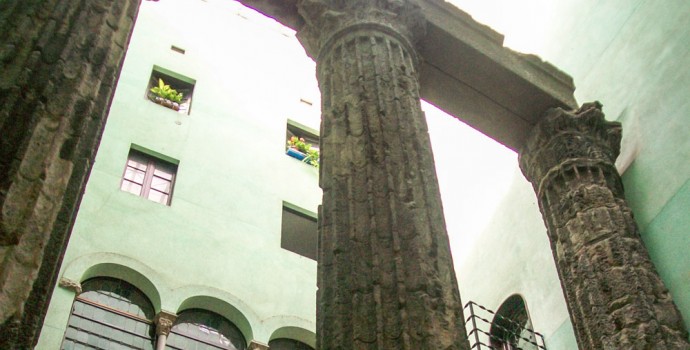Barcelona is a bustling, fast-paced, and modern city in the northeast corner of Spain. Antoni Gaudi, a renowned Spanish architect, designed and built many of the whimsical structures that dot the landscape of Barcelona today. For example, La Sagrada Familia and Casa Mila confront the viewer with their dripping, undulating forms that mimic nature and the up-and-coming Art Nouveau style of the early 1900s. However, despite all the quirky modern buildings, the long, paved streets with glitzy high-end shops, and the touristy beaches that beckon all types of sea-goers, Barcelona has a rich ancient history that often gets shoved unceremoniously to the side. Barcelona was once a satellite city of Ancient Rome, and conventional wisdom has it that the Romans were in this part of Hispania as early as 218 BCE.
However, the vibrant city did not start to grow in its commercial trading and Mediterranean importance until the early 1st century CE. This was because Augustus, the Roman Emperor who thrived on conquering foreign areas, “Romanized” it, and transformed it into a fruitful province for Rome. Although the best example of preserved Roman ruins in Spain are the Aqueducts in Segovia, a sleepy town of under 55,000 residents, there is something captivating about witnessing ruins in the heart of a modern, bustling city.
The first extensive example of Roman ruins is stored in the City History Museum of Barcelona. This hole in the wall museum (only three floors!) is hard to find as it is tucked into a dark, cobblestoned alleyway; however, just ask a local or police officer and they will be happy to point you in the right direction. On the Tuesday night that I visited the museum, the admission was free; interestingly, my family and I basically had the underground portion of the museum to ourselves. This underrated museum houses a wealth of Roman ruins from a wine factory to a cloth dyeing shop. The dyeing shop purportedly featured colors such as “Egyptian Blue” and “Pompeii Blue”; pigments are still noticeable on several of the concrete slabs. The other neat aspect is that one can literally “walk with the ancients” because there is a clear, plastic walkway that snakes through the ruins at the same level as them.
I could well have been walking in the footsteps of a deceased Publius or his wife, Livia. The preserved ruins also included a pedestrian street (the Cardo) with columns /sewers and a Garum factory. Here, vats were built for fish to be skinned, cut, and processed into Garum, an ancient fish sauce that was popular with the Romans. Lined ceramic vessels were sunk into the floor to hold the sauce and the fish remnants. Because the staple beverage of Ancient Rome was diluted wine, naturally this complex included a complex wine making factory. Again, large amphorae were used to hold the processed wine, grape pulp, and tartrates (3rd-4th century). Although this museum also includes Christian ruins (i.e. a small church), I find the characteristic Roman ruins the most fascinating because they tell the story of everyday citizens that were part of the most influential and powerful Empire of the ancient world.
The second “must see” ruin in Barcino (the Roman name for Barcelona) is the Temple of Augustus. This Temple is over 2,000 years old, which makes it the single oldest ruin in Barcelona. It is located in the Gothic Quarter (Barri Gótic), the oldest portion of the city. Sadly, the only part left of this once glorious Temple dedicated to the first Emperor of Rome is the majestic (and grime-ridden) Corinthian Columns. This Temple used to be the focal point of an imperial Forum built in Barcino, and it was likely constructed by Tiberius, the adopted son and heir of Augustus. The Columns today are enclosed in a small medieval courtyard with modern apartments built around them. Imagine opening your dusty blinds and looking out onto some of the most dignified and historically rich ruins in Barcelona—incredible! When I visited this structure, I had the Temple to myself (well, at least until a hoard of tourists stampeded the place, but no matter). The Temple was excavated in the 20th century and draws in a modest stream of tourists during peak seasons (although it too is tucked into a nondescript street corner!)
Tips and Information:
Arrive:
Metro  , Jaume I.
, Jaume I.
